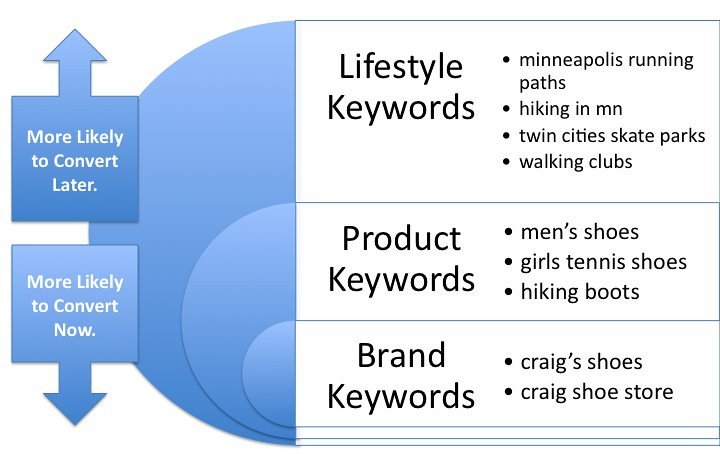In the vast and ever-evolving realm of digital marketing, where words hold the power to inspire and persuade, there exists an unsung hero: the art of SEO copywriting. With its ability to breathe life into online content while appeasing the elusive search engine algorithms, this art form acts as a guiding beacon for businesses seeking visibility and success in the virtual landscape. But what is the secret behind crafting content that not only captivates human readers but also appeases the insatiable appetites of search engines? Join us as we embark on an enchanting exploration of the strategies and techniques that underpin the mystical world of SEO copywriting, unlocking the potential for optimized content that truly shines.
Table of Contents
- The Power of Keywords: Crafting SEO-Driven Copywriting for Higher Rankings
- Captivating Readers and Search Engines: The Value of Compelling and Engaging Content
- Optimizing Structure: Strategic Formatting Techniques to Boost SEO Performance
- Striking the Perfect Balance: Achieving Keyword Density Without Sacrificing Quality
- Q&A
- To Conclude

The Power of Keywords: Crafting SEO-Driven Copywriting for Higher Rankings
When it comes to creating compelling content that attracts both readers and search engines, mastering the art of SEO copywriting is essential. Unleashing the power of keywords can elevate your website’s rankings and put you ahead of the competition. Here, we take a closer look at the strategies that will help you create optimized content that resonates with your target audience, while ensuring your website climbs the rankings ladder.
1. Research, Research, Research
Before putting pen to paper (or finger to keyboard), investing time in keyword research is crucial. Discovering the right keywords for your niche will enable you to understand what your target audience is searching for and help you tailor your content accordingly. Use tools like Google’s Keyword Planner or SEMrush to find keywords with high search volume and low competition.
2. Strategic Placement
Once you have a list of relevant keywords, the secret lies in strategic placement. Incorporating these keywords naturally throughout your content, including the meta tags, headings, and alt attributes, helps search engines understand what your page is about. Remember, though, avoiding keyword stuffing is important to maintain readability and not be penalized by search engines.

Captivating Readers and Search Engines: The Value of Compelling and Engaging Content
When it comes to crafting content that captivates readers and search engines alike, the art of SEO copywriting is an invaluable skill. Not only does it help you optimize your content for search engine algorithms, but it also ensures that your audience remains engaged and interested in what you have to say.
So, what makes a piece of content truly compelling and engaging? Well, one of the key strategies is to focus on creating value for your readers. This means providing them with useful information, answering their questions, and addressing their pain points. By understanding the needs and desires of your target audience, you can tailor your content to deliver exactly what they’re looking for.
- Be informative: Provide insightful and detailed information that educates your readers.
- Use storytelling: Capture your audience’s attention by weaving a narrative that draws them in.
- Make it visually appealing: Incorporate images, videos, and infographics to enhance the overall experience.
- Include relevant keywords: Research and utilize relevant keywords to optimize your content for search engines.
Moreover, a crucial aspect of creating compelling content is to ensure that it is easy to read and navigate. Break up your content into smaller paragraphs, use subheadings to organize your ideas, and make use of bullet points and numbered lists when appropriate. This not only helps your readers to skim through the content quickly but also makes it easier for search engines to understand the structure of your article.
Ultimately, the art of SEO copywriting involves striking a delicate balance between pleasing your readers and catering to search engine algorithms. By employing these strategies and techniques, you can effectively create content that not only ranks well on search engine results pages but also keeps your readers coming back for more.

Optimizing Structure: Strategic Formatting Techniques to Boost SEO Performance
The structure of your content plays a pivotal role in enhancing your website’s SEO performance. By strategically formatting your content, you can significantly improve your search engine rankings and attract more organic traffic. Here are some proven techniques that will help you optimize your content structure and boost your SEO efforts:
1. Subheadings: Break your content into smaller sections using subheadings. Not only does this improve readability, but it also helps search engines understand the context of your content. Use
or HTML tags for your subheadings to give them proper hierarchical significance.
2. Bullet Points and Lists: Incorporate bullet points and numbered lists to highlight key points and ideas. This approach not only makes your content visually appealing but also makes it easier for readers to skim through the information. Additionally, search engines appreciate organized and well-structured content.
3. Bold and Italicized Text: Use HTML tags like (for bold) and (for italicized) to emphasize important keywords and phrases within your content. This technique helps both search engines and readers understand the relevance of specific words or phrases within your content.
4. Multimedia Elements: Incorporating images, videos, or infographics within your content can enhance the user experience and make your content more engaging. However, it’s important to optimize these multimedia elements by adding relevant alt tags and descriptions to improve their visibility in search engine results.
5. Internal Links: Integrate internal links to other relevant pages within your website. This not only helps search engine crawlers discover and index your content more efficiently but also improves user navigation and encourages them to explore other valuable pages on your site.
Optimizing your content’s structure is a vital component of SEO copywriting. By implementing these strategic formatting techniques, you can not only improve your website’s search engine rankings but also provide a seamless and engaging experience for your readers. Remember, a well-structured and highly readable website will keep your visitors coming back for more.
Striking the Perfect Balance: Achieving Keyword Density Without Sacrificing Quality
When it comes to SEO copywriting, finding the right balance between keyword density and maintaining quality content is an art that every beginner must master. Gone are the days when stuffing your articles with an excessive amount of keywords could boost your search engine rankings. Nowadays, search engines favor quality content that provides value to the reader. But fret not, for we have some insightful strategies to help you achieve the perfect keyword density without sacrificing the quality of your content:
- 1. Understand Your Audience: Before incorporating keywords, it’s crucial to know your target audience and their preferences. Conduct thorough research on the language and phrases they use when searching for the information you’re offering. This will help you align your content with their needs and make it more relatable.
- 2. Strategic Keyword Placement: Instead of overstuffing your content with keywords, strategically place them in prominent locations such as the title, headings, and throughout the body of your article. This allows search engines to identify the relevancy of your content without compromising its readability.
- 3. Utilize Synonyms and Related Terms: Rather than focusing solely on a single keyword, include synonyms and related terms throughout your content. This not only helps you diversify your keyword usage but also ensures that your content remains engaging and informative.
- 4. Write Naturally: One of the most important aspects of keyword optimization is to write naturally. Remember, your content is meant to be read by humans, not just search engine bots. Focus on producing high-quality, valuable content that flows naturally, incorporating keywords seamlessly.
By following these strategies, you can strike the perfect balance between keyword density and content quality, crafting SEO-optimized articles that engage readers while improving your search engine rankings. Remember, SEO copywriting is an ongoing learning process, so experiment with different approaches and analyze the results to refine your skills further. Happy writing!
Q&A
Q: What is the key to mastering the art of SEO copywriting?
A: The key to mastering the art of SEO copywriting lies in understanding and implementing effective strategies that optimize the content for search engines while maintaining its creativity and engagement for readers.
Q: How does SEO copywriting differ from traditional copywriting?
A: While traditional copywriting focuses primarily on persuasive language and compelling storytelling, SEO copywriting adds an additional layer of optimizing content for search engines. This involves incorporating relevant keywords, implementing proper HTML structure, and ensuring the content is easily accessible and shareable.
Q: Can you reveal any strategies for optimizing content without sacrificing its creativity?
A: Absolutely! One strategy is to conduct thorough keyword research to identify terms and phrases that align with both the content and the target audience’s search intent. By seamlessly incorporating these keywords into the copy, you can enhance its visibility without compromising its creative expression.
Q: How important is the use of proper meta tags and headers in SEO copywriting?
A: Meta tags and headers play a crucial role in SEO copywriting. They provide search engines with valuable information about the content and its structure. Utilizing appropriate meta tags and headers not only helps improve search engine rankings but also enhances the overall user experience by making the content more scannable and easily digestible.
Q: Is link building still a relevant strategy in SEO copywriting?
A: Absolutely! Link building remains a relevant and effective strategy in SEO copywriting. By acquiring high-quality inbound links from reputable websites, you can boost your content’s credibility and authority in the eyes of search engines. However, it’s essential to focus on natural and organic link building rather than resorting to spammy tactics that may do more harm than good.
Q: How can images and multimedia be optimized for SEO purposes?
A: When it comes to optimizing images and multimedia for SEO, it’s crucial to use descriptive filenames, alt tags, and captions that include relevant keywords. Additionally, optimizing the file size to ensure quick loading times and providing appropriate metadata can further enhance search engine visibility and improve user experience.
Q: Is there a specific word count for SEO copywriting?
A: While there is no specific word count for SEO copywriting, it is generally recommended to have enough content to thoroughly cover the topic and provide value to the reader. However, it’s important to remember that quality should always take precedence over quantity, and the content should be engaging and concise, regardless of its length.
Q: How can social media integration contribute to SEO copywriting success?
A: Integrating social media into SEO copywriting can significantly contribute to its success. Sharing content on various social media platforms not only increases its visibility and exposure but also encourages engagement, attracts backlinks, and generates valuable social signals that search engines often consider when determining the relevance and authority of a webpage.
Q: What are some common mistakes to avoid in SEO copywriting?
A: Some common mistakes to avoid in SEO copywriting include keyword stuffing, which can lead to penalization from search engines, neglecting proper formatting and structure, overlooking the importance of user experience in favor of search engine optimization, and failing to continuously update and refresh the content to keep it relevant and up-to-date.
Q: Can you provide any additional tips for aspiring SEO copywriters?
A: Absolutely! Some additional tips for aspiring SEO copywriters include staying updated with the latest SEO trends and algorithm changes, continuously analyzing and adapting your strategies based on data and insights, conducting regular content audits to identify areas for improvement, and prioritizing the user experience above all else. Remember, SEO copywriting is a skill that evolves with time, practice, and a commitment to delivering valuable and engaging content.
To Conclude
In the grand tapestry of digital marketing, where words hold the power to captivate, compel, and convert, mastering the art of SEO copywriting has become an essential skill for every savvy content creator. As we unravel the strategies that unlock the potential of optimized content, we have peeked behind the curtain of search engine algorithms and basked in the glorious realm of organic traffic. Through the prism of creativity, we have discovered the delicate balance between engaging storytelling and meticulous keyword optimization.
With each meticulously crafted sentence, we dance the waltz of relevance and resonance. The algorithms that govern search engines, those enigmatic gatekeepers of the internet, have evolved to appreciate the significance of context and intent. No longer are they fooled by mere strings of keywords, for in this realm, the invisible thread connecting user queries and web pages has grown stronger. Our words must effortlessly weave through this intricate web, gently guiding searchers to the answers they seek.
But let us not forget the essence of our craft—the human touch that breathes life into mere collections of characters. The art of SEO copywriting recognizes the most sublime power of words: their ability to forge connections, to evoke emotions, and to inspire action. Yes, the optimization is crucial, but the true magic lies in the fusion of strategy and creativity.
So, as we stand on this precipice of limitless potential, armed with strategies and insights, let us embark on a journey where our words find their rightful places on the search engine throne. With renewed passion, let us pen content that sings to both human hearts and algorithmic ears, for the path to success lies in striking that harmonious chord. Remember, the art of SEO copywriting is evolving, growing, and adapting, but its essence remains unchanged—a symphony of words that resonates in the vast symposium of the digital realm.
May this unveiling of strategies illuminate your path and inspire your next masterpiece.

